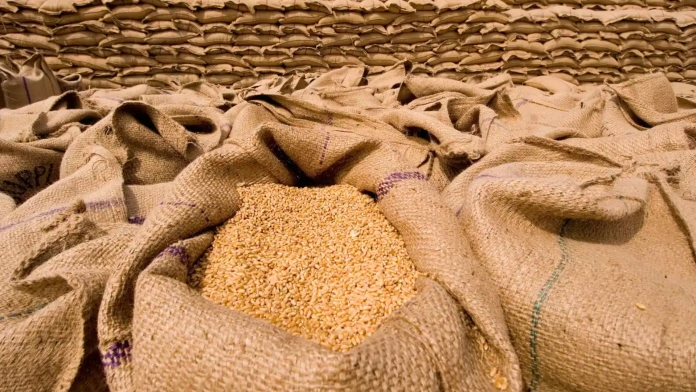The Indian government’s decision to sell 385,000 tonnes of wheat in an open market auction is part of a larger plan to sell three million tonnes of wheat from the central pool to address the increasing prices of this key foodgrain. The move assumes significance as India’s retail inflation has crossed the Reserve Bank of India’s upper tolerance band of 6% after a two-month gap.
Inflation is a measure of the increase in the general level of prices of goods and services in an economy over a period of time. Higher inflation means that people have to spend more money to buy the same amount of goods and services, which reduces the purchasing power of their income.
Inflation in India is measured by the Consumer Price Index (CPI), which is the measure of the average change over time in the prices paid by urban consumers for a basket of goods and services. In January, the CPI inflation rose to a three-month high, driven by a spike in food prices. Inflation based on the CPI also increased to 6.52% in January from a one-year low of 5.72% in December.
Ministry of consumer affairs, food and public distribution said.“In order to address the rising price of wheat and atta in the country, as per the recommendation made by the Group of Ministers, Food Corporation of India is offering wheat for e-auction. The sale of wheat through e-auction will continue throughout the country on every Wednesday till the 2nd week of March 2023,”
Food inflation is an important component of the CPI, and it increased sharply to 6.19% in January from 4.58% in December. Although vegetable prices decreased to 11.7% in January from 15.08% in December, cereals, eggs, meat and fish, milk products, oils, and fats saw an increase in inflation. The Indian government is trying to address the increasing prices of wheat by selling three million tonnes of wheat from the central pool to the open market.
Devendra Pant, chief economist and head – public finance, India Ratings and Research said, “The government maintains stocks with it and the purpose of it is to intervene in the markets when the prices are high. The government is talking about offloading about 2.6% of the total production to increase open market availability. This move should theoretically bring down prices. Besides, the country’s wheat production is expected to touch a new record of 112.18 million tonnes in the 2022-23 crop year, which is better than last year.”
Wheat prices have been on the rise since the Ukraine war broke out in February last year, as Russia and Ukraine account for nearly one-fourth of the global wheat production. The increase in international prices led India to ban wheat exports in May to prevent a surge in domestic prices. The government also prohibited exports of wheat flour (atta), flour, semolina, and wholemeal atta. The government may continue to extend the ban on wheat exports beyond March and restrict shipments of non-premium rice to control local prices while expanding purchases of cereal stocks that are at their lowest in five years.
To address the shortage of wheat, the government allocated 5.5 million tonnes of rice in place of wheat under the free ration scheme, PM Garib Kalyan Anna Yojana, last year. The scheme was launched by the Indian government to provide free ration to vulnerable sections of society during the Covid-19 pandemic. The scheme has been extended till November 2021.
The Indian government is taking several measures to address the increasing prices of wheat and other food items, including selling wheat from the central pool in an open market auction, extending the ban on wheat exports, and allocating rice under the free ration scheme. The government’s efforts are aimed at curbing inflation, which can have a significant impact on the economy and people’s lives.





